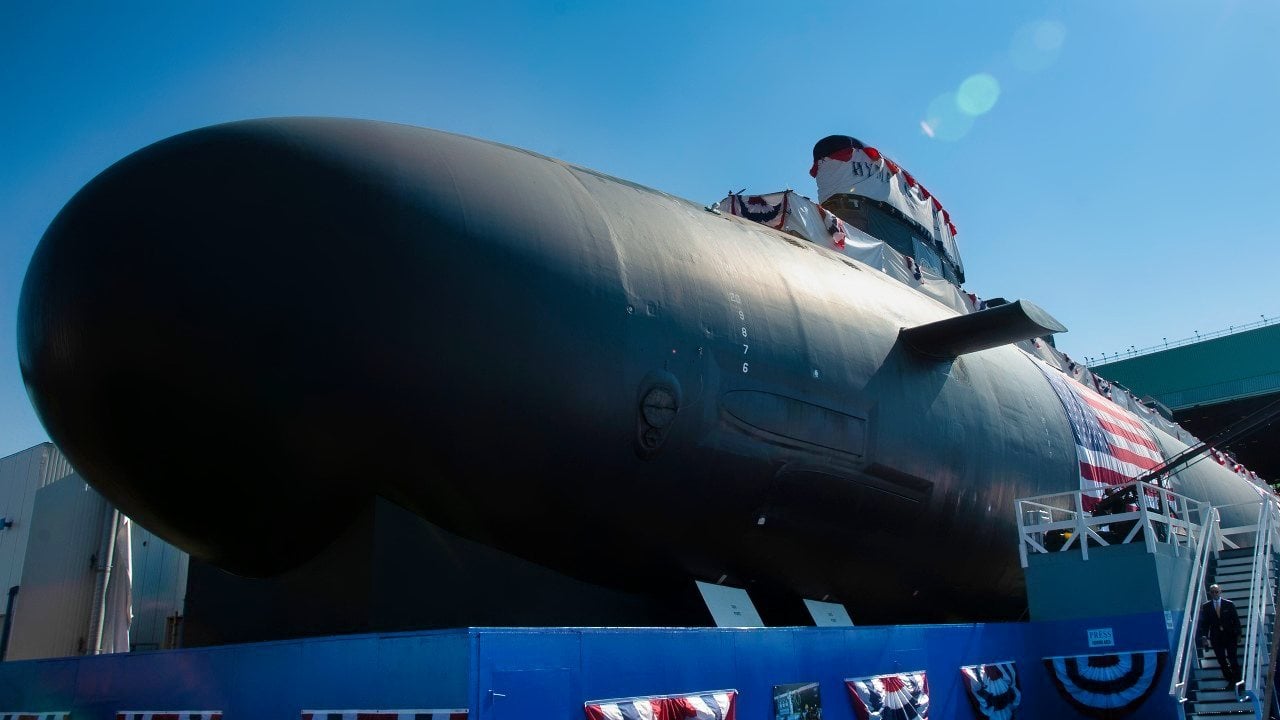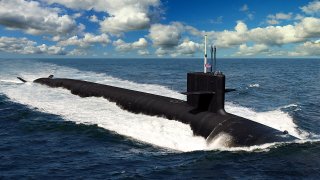Columbia-Class and Virginia-Class Submarines: Overbudget and Behind Schedule (Why?)
U.S. senators, led by Sen. Tim Kaine, are demanding clarity on the Navy's Shipyard Accountability and Workforce Support (SAWS) plan amid escalating delays in submarine construction, including for Virginia-class and Columbia-class submarines.
What You Need to Know: U.S. senators, led by Sen. Tim Kaine, are demanding clarity on the Navy's Shipyard Accountability and Workforce Support (SAWS) plan amid escalating delays in submarine construction, including for Virginia-class and Columbia-class submarines.

-SAWS, introduced to fund workforce needs and infrastructure without additional Congressional appropriations, faces scrutiny regarding its effectiveness.
-Lawmakers are calling for transparency on SAWS negotiations and seeking solutions to address a projected $17 billion deficit in the Navy’s submarine programs. Navy Secretary Carlos Del Toro’s push for increased legal immigration to tackle workforce shortages adds complexity, particularly under current political pressures surrounding immigration reform.
U.S. Lawmakers Question Navy's SAWS Plan For Submarine Construction
On Friday, a bipartisan group of United States Senators – led by Sen. Tim Kaine (D-Va.) – submitted a letter to the United States Navy and White House Office of Management and Budget (OMB), requesting new details on the Shipyard Accountability and Workforce Support funding plan. SAWS, as it is now known, was proposed in September to allow the sea service to take some labor funding that has been approved for the building of future submarines and redirected to address the current worker shortage at America's shipyards.
According to a report from USNI News, "SAWS would take the money frozen for support services labor from the individual contracts not yet under construction and create a large pool of funds for shipbuilders to both boost wages and make capital improvements without asking Congress for additional appropriations."
In January, U.S. Navy Secretary Carlos Del Toro ordered a comprehensive review to examine national and local causes of the challenges to shipbuilding. The findings, which were released in April, found that five classes of vessels being built for the sea service are now running anywhere from one to three years behind schedule.
That includes the Virginia-class fast attack submarines, while U.S. Navy officials also projected that the first Columbia-class boat – USS District of Columbia (SSBN-826) – will be delivered 12 to 16 months later than the contractual delivery date of October 2027.
Lawmaker Concerns – Can SAWS Cut It?
The group of U.S. lawmakers – which includes Sen. Jeanne Shaheen (D-N.H.), Angus King (I-Maine), Kevin Cramer (R-N.D.), and Mark Warner (D-Va.) – are now questioning whether SAWS is will be able to cut through the delays.

"Between 2018 and 2023, over $2.3 billion has been invested in the submarine industrial base, and the supplemental enacted earlier this year included an additional $3 billion. This infusion of capital has enabled suppliers from across the United States to hire, train, and retain the American workforce critical to a strong submarine industrial supplier base, while also allowing them to make capital investments that improve production capacity and efficiency," the letter stated.
"It is our understanding that over months of conversation Pentagon leadership, the Navy, and industry reached an agreement to maximize use of taxpayer funding for construction of the next tranche of Columbia-class and Virginia-class submarines – including by raising wages to attract and retain America's skilled and organized shipyard workforce, addressing rising costs, and advancing much-needed infrastructure investments, all to improve program reliability and schedule," the letter to Del Toro added. "Based on the information available so far, the Shipbuilder Accountability and Workforce Support agreement strikes us as a promising approach to ensure our submarine industrial base rises to the occasion, accelerates submarine production, and fully meets the critical and building demand on U.S. shipyards."
The lawmakers questioned why the sea service hadn't notified Congress earlier and called for more "consistent communication" with both Congress and OMB. The senators also directed several questions at Secretary Del Toro:

1. When was the Navy first aware of the coming deficit in our submarine programs? How long was the delay in updating Congress of the expected overruns, and how will the Navy commit to improving those timely communication channels going forward?
2. How was the SAWS agreement negotiated? Please describe the timeframe for the agreement's negotiation and its reception by the stakeholder involved throughout its presentation to OSD and OMB.
3. What advantages does the Navy see in the SAWS agreement – especially related to increasing shipyard workers' pay, improving retention and productivity, and getting our submarine programs on schedule and cost? What concerns or risks, if any, does the Navy see in the agreement?
4. If not the SAWS initiative, what is the plan for the Navy to address the upcoming $17 billion deficit and get our submarine programs back on track?
The letter also stressed that "It is critical that our submarine programs be on schedule and on budget."
An Immigration Issue
Even as there are now calls by former President Donald Trump and his supporters to deport undocumented immigrants, Del Toro suggested the country should look to immigrants to address the worker shortage.
"Regretfully, we're a pretty divided country politically, you might say, but it really is time for Congress to get together and pass comprehensive reform and increase the amount of legal immigration that we actually allow into this country [and] increase the amount of work visa programs that are authorized for blue-collar workers to come from other nations and actually do the work here as has actually existed since the founding of our government, very much so," Del Toro said in April.
The secretary suggested that the U.S. could "open up the spigot a bit," on "legal immigration to allow blue-collar workers" to come to the United States and take on jobs that can't currently be filled.
Such a proposal would almost certainly be a non-starter in a second Trump administration.
Author Experience and Expertise: Peter Suciu
Peter Suciu is a Michigan-based writer. He has contributed to more than four dozen magazines, newspapers, and websites with over 3,200 published pieces over a twenty-year career in journalism. He regularly writes about military hardware, firearms history, cybersecurity, politics, and international affairs. Peter is also a Contributing Writer for Forbes and Clearance Jobs. You can follow him on Twitter: @PeterSuciu. You can email the author: [email protected].
Image Credit: Creative Commons and/or Shutterstock.


